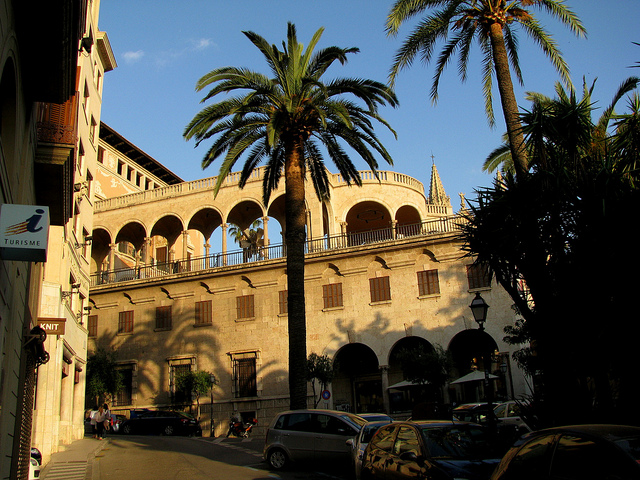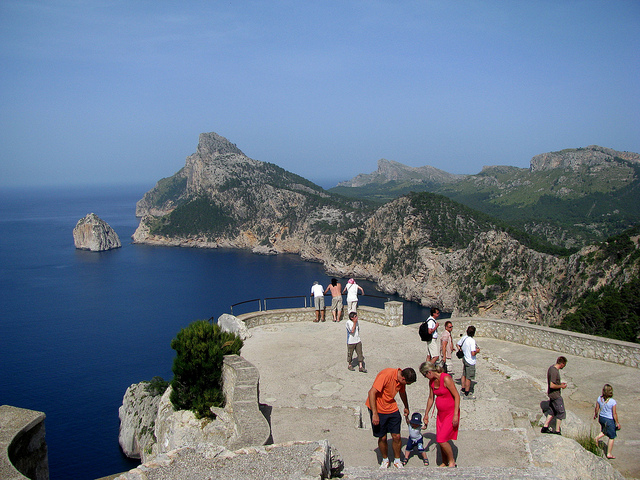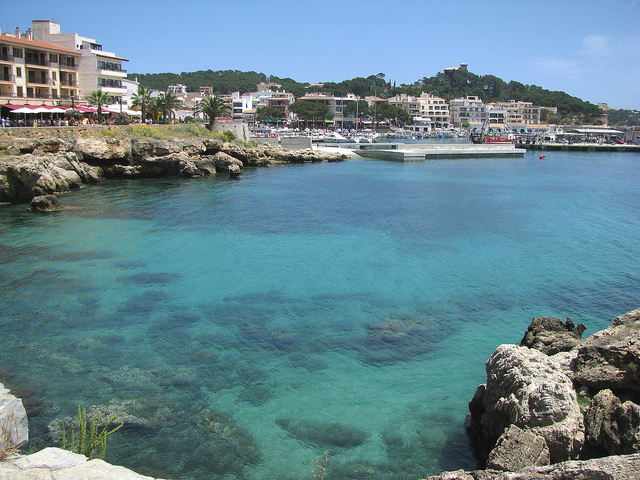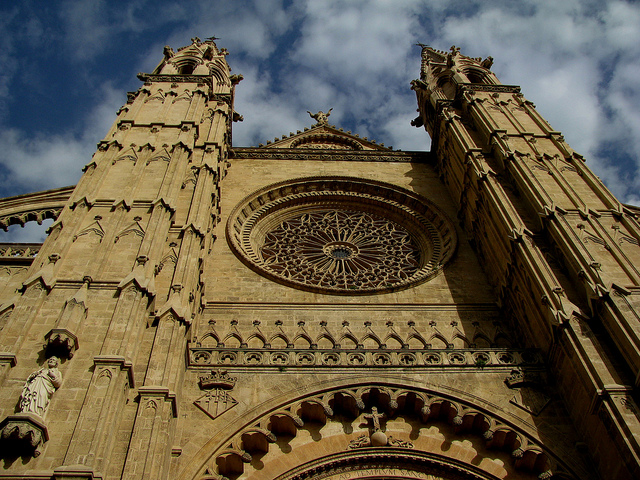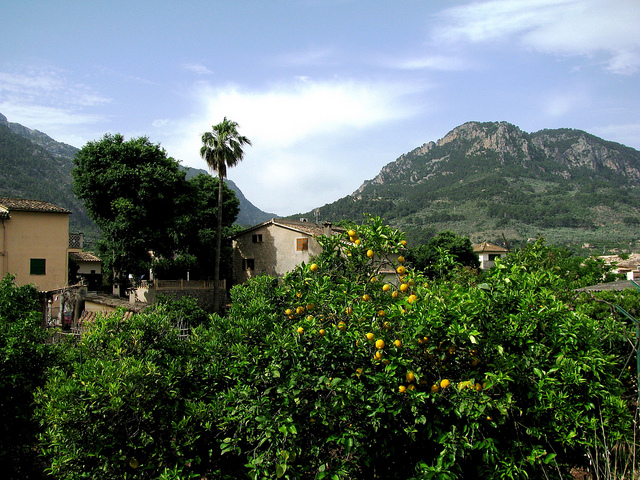I planned to spend the evening in Palma de Mallorca, parked my car east of downtown and strolled through the narrow streets of the La Calatrava neighbourhood towards the famous cathedral, La Seu. This district has narrow winding streets that date back to Arab times, when Mallorca was dominated by the Moors from the early 10th century until its reconquest in 1229. One of the few relics of Moorish architecture in Palma are the Arab Baths which are also located in this neighbourhood.

The imposing Gothic cathedral of La Seu in Palma de Mallorca
As the sun started to sink lower on the horizon I arrived on Calle Mirador, right next to the imposing cathedral and to the Palau de l’Almudaina. This palace was the former royal residence of King Jaume II, who conquered Mallorca back from the Moors in the early 13th century. The walls of an earlier Arab fortress were used in the construction of the Palau de l’Alumdaina. With the palace and the cathedral at my back, I enjoyed a beautiful vista towards the Mediterranean Sea, past the Parc de la Mar, which features a large man-made lake and a giant mural by Joan Miro.

The 13th century Palau de’l Alumdaina
I strolled into the westerly sun past two additional major landmarks: the Consolat de Mar, an elegant Renaissance-Baroque building from the 1600s, which today is the seat of the government of the Balearic Islands; and La Llotja, a former stock exchange that dates back to the late Gothic period and was finished in 1456. La Llotja is unusual in that it is a secular building, while most of the architecture that is preserved from the Gothic area consists of churches and cathedrals.

Statue in front of the Palau de l’Alumdaina
The nearby Plaça Drassanes was very lively with several outdoor patios and live music. From here I started exploring the narrow streets west of the Cathedral, peaked into various restaurants, bars, jewelry shops and some of Palma’s magnificent courtyards that are the hidden gems of so many old buildings in the old part of town. I stopped at a pastry shop to looked at some famous “ensaimadas”; these are Mallorcan yeast-dow cakes that are shaped like a coil. They are usually sold in gift boxes and their name actually derives from the Arab word “saim” which means “pork lard”. They looked mighty delicious in their display case, but I was out of luck as the retail store was already closed.

Mallorca’s famous ensaimadas, I wish I had tasted one…
On the Plaça del Rei Joan Carles I stopped to take in the almost Parisian atmosphere with the bustling street cafes and an accordion player. Walking south through the Passeig des Born, Palma’s main shopping street, I ended up on Plaça de la Reina and headed up on Carrer Conquistador to Palma’s City Hall. Located in a historic building on Plaça Cort, this is also the location of the main tourism office of Palma.

Palma de Mallorca’s city hall, the Ayuntamient
Always curious, I walked inside and admired the main entrance hall with its impressive staircase. Two huge statues of a Mallorcan man and woman in traditional dress were flanking the steps, and two more gigantic figures of a traditional Mallorcan flute player and a drummer were standing guard to the left of the entrance. The Municipal Public Library is also located in this building.

Two giant statues inside the entrance hall of Palma’s city hall
A very large, gnarly olive tree stands across from the City Hall, a popular place for tourists to take photos. I walked northwards on Carrer Colom, a trendy shopping street in Palma. Most places had already closed or were just shutting down. I caught a glimpse of a store called “Toronto”, which was actually a sandwich bar. This was surprising because Mallorca is not visited by many Canadian travelers.

Live Flamenco music on Palma’s Plaça Major
At the end of the street I arrived at Plaça Major, a pedestrian-only square dating back to the 19th century. Buildings on all four sides of the square have the same façade design and several bistros and cafes entertain guests on their outdoor patios. In the middle of the square a Flamenco player was enchanting the passers-by with his guitar.

Beautifully crafted hinge on a wooden door in Palma
It was now starting to get dark and I started making my way back towards my car through the narrow streets of La Calatrava. All of the stores had closed already, and this district seemed very quiet and deserted. Very few people were on the street, with the exception of a few American marines who had sailed into town aboard a US battleship.

The gnarly olive tree on Plaça Cort
The sun had already slipped beneath the horizon as I started my half hour trek back to Palmanova. Reflecting back on the day I thought that Palma de Mallorca is one of those places that would be perfect for retirement. With its great climate, diverse cultural and entertainment offerings and the beautiful surroundings of Mallorca’s countryside, this Mediterranean city has a lot to offer.

The warm evening glow of the setting sun on the western facade of La Seu
